Measure static coefficients of friction
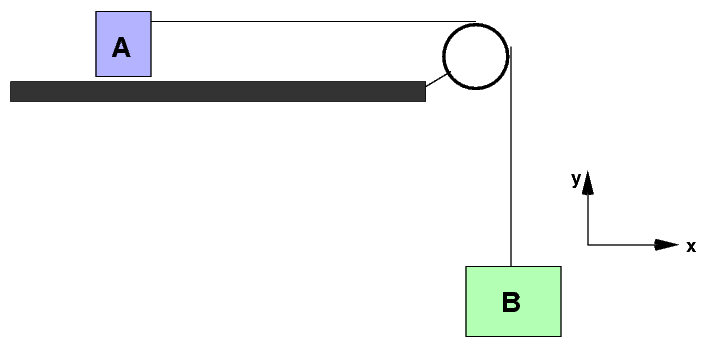
Today, we'll use one of the friction blocks
with mass bars sitting on it as the object labelled "A"
above,
and cylindrical weights as the hanging mass labelled "B".
There is definitely a friction force which pulls
object "A" to the left.
We can make a table showing all the forces on A:
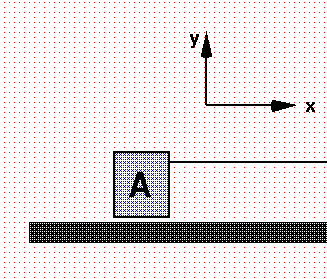
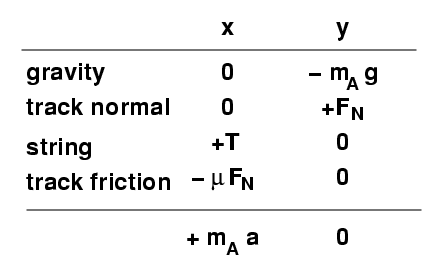
And another table for all forces acting on the hanging weights.
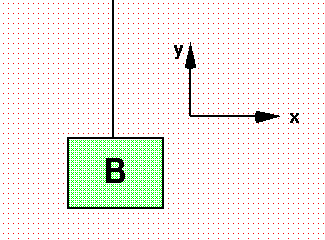
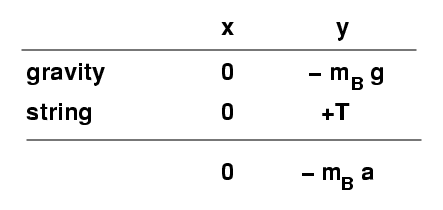
Two equations, two unknowns
You should end up with a set of two interesting equations:

- static case: if the friction block doesn't move at all,
then the acceleration a = 0.
Solve for the coefficient of static friction μs
- kinetic case: if the friction block is sliding and accelerating,
then the acceleration a is NOT zero.
Solve for the coefficient of kinetic friction μk
(it will be a bit messy)
Today, we'll focus on the static case.
The experiment
Set up a track, pulley, string, etc., as shown in the diagram above.
Wipe the track clean with paper towels, and wipe the wooden side
of the friction block, too.
Use a friction block and one mass bar as object "A".
- Start with the fabric side of the block touching the track.
Add mass to the hanging weight "B" until the block ju-u-u-st barely
starts to slide.
You can use the masses to figure out the coefficient of
static friction.
- Now flip the block so that the wooden side touches the track.
Adjust the hanging weight "B" until the block
just starts to slide.
What is the coefficient of static friction now?
- Some textbooks state that the coefficient of friction
does not depend on the area of contact between
two objects.
Modify your apparatus to test this claim.
Is it correct? Use your measurements to justify your answer.
- Replace the friction block with a plastic ruler
(again with a mass bar sitting on top).
What is the coefficient of static friction of the plastic?
- What's the largest coefficient of static friction
you can measure?






